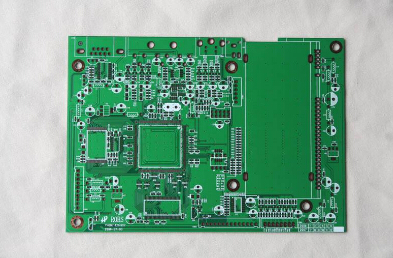What are the characteristics of PCBA
I believe that many people are not unfamiliar with PCB circuit boards, and may be heard often in daily life, but they may not know much about PCBA, and may even be confused with PCB. So what is a PCB? How did PCBA evolve? What is the difference between PCB and PCBA? Let's take a look at it in detail below.
About PCB
PCB is the abbreviation of Printed Circuit Board, translated into Chinese is called printed circuit board, because it is made by electronic printing, it is called "printed" circuit board. PCB is an important electronic component in the electronics industry, a support for electronic components, and a carrier for electrical connection of electronic components. PCB has been extremely widely used in the manufacture of electronic products. The unique characteristics of PCB are summarized as follows:
1. High wiring density, small size and light weight, which is conducive to the miniaturization of electronic equipment.
2. Due to the repeatability and consistency of the graphics, the wiring and assembly errors are reduced, and the maintenance, debugging and inspection time of the equipment is saved.
3. It is conducive to mechanization and automatic production, which improves labor productivity and reduces the cost of electronic equipment.
4. The design can be standardized to facilitate interchangeability.

About PCBA
PCBA is the abbreviation of Printed Circuit Board + Assembly, which means that PCBA passes through the entire manufacturing process of PCB blank board SMT and then DIP plug-in.
Note: SMT and DIP are both ways to integrate parts on the PCB. The main difference is that SMT does not need to drill holes on the PCB. In DIP, the PIN pins of the parts need to be inserted into the holes that have been drilled.
SMT (Surface Mounted Technology) surface mount technology mainly uses mounters to mount some tiny parts on the PCB. The production process is: PCB board positioning, solder paste printing, mounter mounting, and reflow Furnace and finished inspection. DIP stands for "plug-in", that is, inserting parts on the PCB board. This is the integration of parts in the form of plug-ins when some parts are larger in size and are not suitable for placement technology. The main production process is: sticking adhesive, plug-in, inspection, wave soldering, printing and finished inspection.
*The difference between PCB and PCBA*
From the above introduction, we can know that PCBA generally refers to a processing process, which can also be understood as a finished circuit board, that is, PCBA can be counted after all the processes on the PCB board are completed. The PCB refers to an empty printed circuit board with no parts on it.
In general: PCBA is a finished board; PCB is a bare board.
Materials to be used in the circuit board manufacturing process in PCBA
1, substrate
The original material of the printed circuit board is a copper-clad substrate, referred to as a substrate. The substrate is a resin board with copper on both sides. The most commonly used board code is FR-4. FR-4 is mainly used for computers, communication equipment and other grade electronic products. The requirements for the board: one is the flame resistance, the second is the Tg point, and the third is the dielectric constant. The circuit board must be flame-resistant, cannot burn at a certain temperature, and can only be softened.
2, copper foil
Copper foil is a conductor that forms wires on a substrate. There are two methods for manufacturing copper foil: rolling and electrolysis.
3, PP
PP is an indispensable raw material in the production of circuit boards, and its function is the adhesive between layers. Simply put, the substrate sheet in the b-stage is called PP. The specification of PP is the thickness and the amount of glue (resin) .
4. Dry film
Photosensitive dry film is referred to as dry film. The main component is a resin material that is sensitive to a specific spectrum and undergoes a photochemical reaction. A practical dry film has three layers, and the photosensitive layer is sandwiched between two protective plastic films. The chemical characteristics of the substance are classified, there are two types of dry films, photopolymerizable and photodegradable. The photopolymerizable dry film will harden under the light of a specific spectrum, and change from water-soluble substances to water-insoluble, while the photodegradability is just the opposite. .
5, solder resist paint
Solder resist is actually a kind of solder resist. It is a liquid photosensitive material that has no affinity for liquid solder. Like photosensitive dry film, it will change and harden under the light of a specific spectrum. The solder paint should be mixed with the hardener and used. Solder resist is also called ink. The color of the circuit board we usually see is actually the color of the solder resist.
6, film
The negatives we are talking about are similar to photographic negatives, which are materials that use photosensitive materials to record images. The customer sends the designed circuit diagram to the PCB factory, and the CAM center workstation outputs the circuit diagram, but not through a common printer. It is a light plotter. The role of the film in the circuit board factory is very important. All things that use the principle of image transfer to be on the substrate must first be turned into a film.